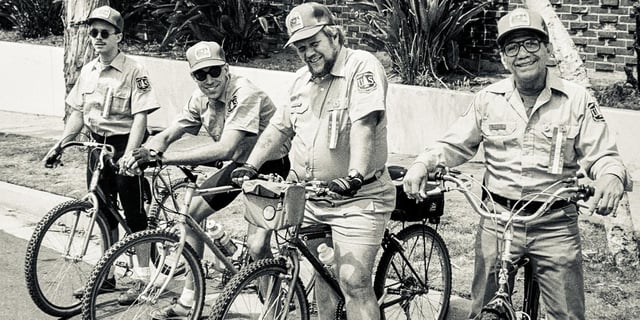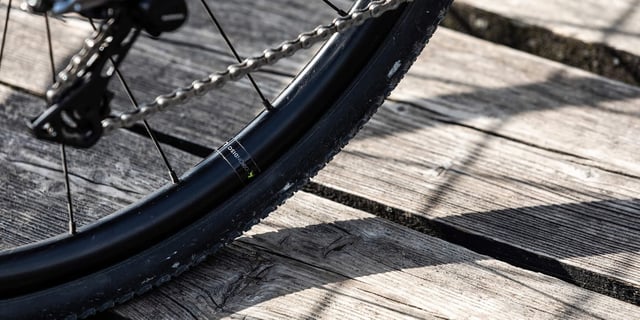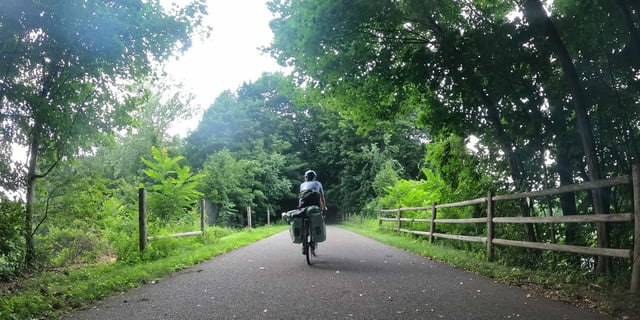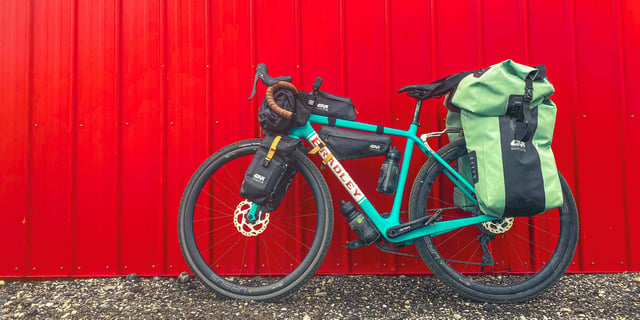
The story of the mountain bike began soon after that of road cycling, when the first bicycle was adapted for off-road routes. It's said that one of the earliest off-road uses of the bicycle was by the Buffalo Soldiers of the United States army, in Montana in 1896.
But how have we come to the modern off-road bike and the multiple MTB disciplines?
In this article we'll tell you the story of the mountain bike, today used and loved by millions around the world, with specialised and increasingly advanced bikes and accessories.
When was the bicycle invented?
The first bicycle was invented in the 19th century. Although there’s no definitive agreement on who was responsible, the stroke of genius is generally attributed to Karl Drais, a German inventor.
Drais' machine was built in 1817 and called the Laufmaschine. Curiously, it had no pedals: you had to push it along with your feet.
Another 50 years or so would pass before the bicycle as we know it today came along.
In the meantime, the machine underwent several evolutions. For example, there was the velocipede: the pedals were attached to the front wheel, but the structure began to look similar to that of modern bikes.
The decisive moment came in 1860, thanks to French blacksmith Pierre Michaux, who patented a pedal-powered bicycle that had a huge impact on this form of transport.
The advent of the mountain bike
But let's get to the heart of the article: the story of the mountain bike. As we mentioned, the first use was in a military context, by the Buffalo Soldiers of the US army.
The evolution of this "mountain bicycle" was rapid, and today there are several types of MTBs.
Let's take it step by step.
What does MTB mean?
MTB is just the acronym of mountain bike, meaning a bicycle adapted for off-road riding, including on rough terrain in mountain areas.
MTBs can handle grassy tracks, pebbles and single-track roads, but also tracks with jumps and constant ups and downs. It all depends on the discipline you want to try.
The story
The modern mountain bike only arrived in the 1970s. But between the Buffalo Soldiers in Montana and the roaring 70s, there are several intermediate stages that made the MTB what it is today.
One of the first off-road bikes was for cyclo-cross. To maintain their fitness levels during the winter months, road cyclists would cycle in the mountains, forests and on rough tracks. This habit led to the birth of cyclo-cross, but also to a series of adaptations to the bicycle, and the start of the early mountain bike.
There are several key dates in the history of MTB:
- 1966: in the USA, D. Gwynn built the first mountain bicycle, suitable for rough terrain;
- 1970s: the trend of the klunker bikes. These were road bikes adapted for tracks;
- In 1977, a group of cyclists including Joe Breeze, Gary Fisher and Charlie Kelly began building customised mountain bikes based on the design of klunker bikes and making significant improvements to various parts. These pioneers are often considered the fathers of the modern mountain bike.
- 1979: Geoff Apps developed a bicycle with special tyres to handle snow and muddy ground. The bike was sold until 1984.
From the 80s, MTB became a popular sport, with a global reach and enjoyed by millions all over the world. The different disciplines gradually began to emerge. In the early 90s, following recognition by the International Cycling Union UCI, the first professional downhill and cross country races were held.
MTB disciplines today
Here's a list of the most widespread MTB disciplines today:
- Cross Country: speed trials on dirt roads, but without particular technical difficulty;
- Downhill: speed trials on completely downhill courses;
- Enduro: a discipline that combines elements of downhill and cross country;
- Freeride and Slopestyle: disciplines characterised by jumps and acrobatics.
Mountain bikes are also used for leisure excursions and cycle tourism in the mountains, but here the preference is commonly for specific gravel bikes.
MTB: which to choose?
Your choice of mountain bike depends on the discipline you prefer. Nowadays there are different and highly specialised bikes for the various competitions, not to mention the gradual spread of electric MTBs.
If you're coming to the world of mountain bikes for the first time, consider a second-hand or entry-level MTB.
However, there are a few points that merit attention:
- The size of the bike should be suitable for your body type;
- Responsiveness is an important quality in all MTB disciplines;
- The wheels must be suitable for MTB terrains.
The characteristics of modern MTB wheels
In MTB the right wheels are essential so you can stay safe and give your best performance on the track. Wheels have evolved along with bicycles, and today they have certain features that are completely different from road bikes. The choice of MTB wheels depends on the discipline you intend to practise, but we can point out some common characteristics:
- Wheel diameter: smaller than road bikes. Diameters used in MTB are 26, 27.5 and 29 inches;
- Tyre width: MTB wheels have wider tyres, ranging from 2 inches to 2.8 inches or more, giving better suspension;
- Rim profile: MTBs often use high-profile wheels, which are more resistant to shock and the demands of uneven terrains;
- Braking system: nowadays disc brakes are the preference for MTBs, for more effective and constant braking even on downhill stretches and wet ground;
- Tyre: MTB cyclists increasingly choose tubeless tyres, which are less susceptible to cuts and punctures.
Do you have everything you need to get started in MTB? Download our checklist now and discover the must-have accessories.



